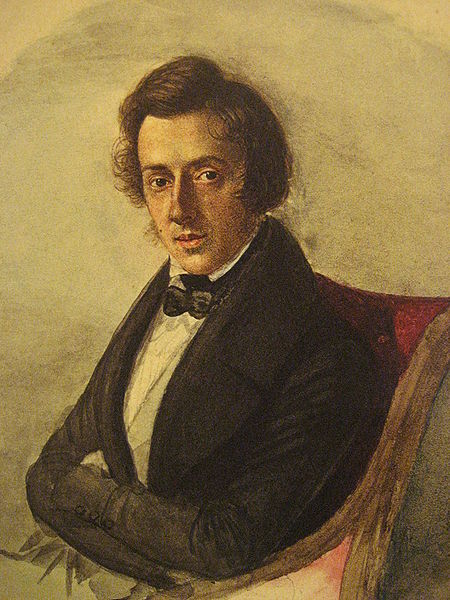Chopin, Scherzo in B-flat minor, Op. 31
 The term scherzo means, literally, joke or jest. When the term first appeared in the early 17th century in Italy, it generally referred to a lighthearted work. The New Grove Dictionary refers to Monteverdi’s scherzi from this time as “frivolous in tone and unambitious in scope.”
The term scherzo means, literally, joke or jest. When the term first appeared in the early 17th century in Italy, it generally referred to a lighthearted work. The New Grove Dictionary refers to Monteverdi’s scherzi from this time as “frivolous in tone and unambitious in scope.”
But this scherzo by Chopin is no joke. And you could hardly call it frivolous in tone or unambitious in scope.
The classical scherzo shows up in some of the works of Haydn, but it was Beethoven who made it mainstay of serious multi-movement works. It served as a substitute for the minuet that you would typically find in Haydn and Mozart symphonies. It would typically be cast in triple meter and have a fast tempo. And it might change character suddenly and frequently. Beethoven included scherzos in all but two of his nine symphonies, and it was there that the scherzo (typical of Beethoven) began to take on larger and more complex forms.
Chopin took the form out of its typical place in a multi-movement work and gave it a life of its own. His four scherzi are all highly virtuosic. They all have a fast tempo and triple meter. And while not frivolous, they do have a certain playfulness. They go to extremes and are punctuated by surprises. The character and texture change rapidly.
This particular scherzo, the second of the four, was composed in 1837. Robert Schumann compared it a Byronic poem, “so overflowing with tenderness, boldness, love and contempt.”



